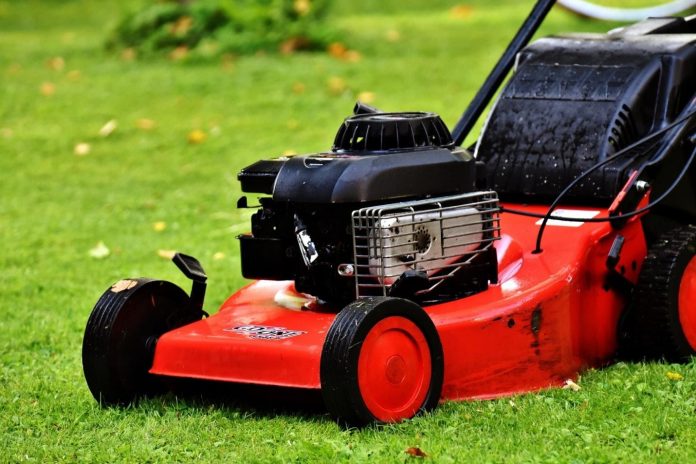It sounds like a simple question, but the answer is a little more complicated than you might think. Mow your lawn too much, and you could be harming its growth. Mow it too little, and you’re that one house on the block that’s unsightly as neighbors drive past.
Different grasses require different maintenance, and with over a dozen types of grasses on the market for homeowners, you’ll need to understand what you’re working with, too.
In this guide, we offer insight into the grass-cutting process, as well as provide some tips for keeping your lawn looking lush year-round.
Keep reading!
How Often Should You Mow Your Lawn?
The answer to this question has a few layers. First, how often you should mow your lawn depends on factors like:
- The desired length you want
- Whether you have a warm-season grass or cool-season grass (or even a combination)
- If it’s a dormant season vs. an active growing season
A nice, standard length for grass is about 3½ inches, allowing it to have deeper, sturdier roots. This length allows the roots better to absorb nutrients from the soil and any fertilizer. Short, shallow roots have a harder time doing this and are more prone to dying.
So, first things first, does your grass even need cutting? If you’re cutting too-short grass, you’re likely doing more harm than good.
Of course, if it’s an overgrown lawn clearly in need of a trim, keep reading.
Do you know what type of grass you have? Warm-season grasses are more typically in the South, Southeast, and Gulf Coast regions, and they thrive in the sunlight and warmth. Cool-season grasses, found in areas like the North, Northeast, Midwest, and North Pacific, are better at handling temperature fluctuations and winter weather.
Types of warm-season grass include:
- Zoysia
- Centipede
- Bermudagrass
- St. Augustine
Cool-season grasses include:
- Kentucky bluegrass
- Fine fescue
- Tall fescue
- Perennial ryegrass
If you’re not sure of your specific type, your location is a good indicator of at least which season of grass. You can always ask for an opinion from an expert or consult your HOA if you have one.
When it comes to dormant vs. active growing seasons, cool-season grasses begin absorbing nutrients again when the ground is about 55-65°, and thrive between 60 and 75 degrees. Warm-season grasses start responding to the soil at about 70° and higher, thriving around 80 degrees.
Grass-Cutting Tips for a Lush, Green Yard
In addition to the advice above, there are some other measures you can take to ensure your grass is flourishing.
Some tips for keeping your lawn in tip-top shape include:
- Avoid scalping the grass (as mentioned), which makes the lawn more susceptible to diseases and becoming overgrown by weeds
- Stay mindful of exposing the soil, which allows weeds to flourish, and provides an entry point for sunlight to help them grow
- Know your mower: ensure its blade is sharp enough to cut well, and adjust the height with the seasons (taller grass in the summer, shorter in the winter)
- Let grass cuttings stay on the lawn after mowing to provide fertilizer (aka grasscycling), unless the grass is very damp and heavy—which brings us to our next tip
- Avoid cutting the grass when it’s wet, which results in moist clumps on your lawn and a clogged mower. Drier grass is easier to manage
- Try to cut grass in times of lower light, as intense sun exposure after cutting can cause stress and dryness
- Avoid compacting the soil (or creating ruts) by mowing in different directions or patterns for each row
- If you practice grasscycling, do so with about one-third of the grass’s length
Here’s a bonus, secret tip from the experts: if much of your lawn rests in the shade, keep the blades longer. The more surface area each blade has, the more chance it conducts photosynthesis. This fact can allow even low-light regions to thrive, as long as they’re kept longer.
For those who have to mow your grass on a hill—even a mild one—mow from side to side instead of up and down. Moving upwards on a slope could be dangerous and slippery.
Should You Hire a Landscaper?
Does all this information have you wanting to Google, “lawn company near me“?
If you don’t have the time (or frankly, the energy) to keep up with your grass during its active growing season, you may need to consider hiring a professional. Not only can they cut your lawn to its desired length, sans damage, but they’ll be able to apply fertilizer and keep the soil nutrient-dense.
This point also applies if your lawn is quite large. If you’re dealing with a larger space, a combination of grasses, and a lackluster lawnmower, you’ve got a recipe for calling an expert.
Otherwise, grass is relatively low-maintenance, and you may be able to handle it on your own. Consider mowing it about once a week when it’s active, and every other week (as needed) when it’s dormant.
If you can’t fathom spending your Saturday off messing with the yard, that’s one of many decisions you’ll make as a homeowner.
The Grass Is Always Greener. . .
. . .On your side of the neighborhood.
With this grass cutting advice, you’ll never have to ask the question, “How often should you mow your lawn?” again. Keep in mind your grass’s current length, its type, the season, and these tips, and you’ll be good to landscape!
If you’re looking for more insight into topics like this, we’ve got plenty, covering a wide range of interests. Keep scrolling our blog before you head out.






























































